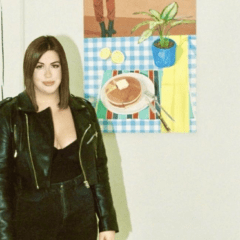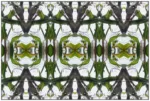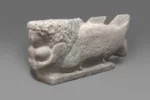“you are not a country, Africa.
you are a concept,
fashioned in our minds, each to each”
– from “The Meaning of Africa,” poem by Abioseh Nicol, poet, diplomat, academic from Sierra Leone
I am reminiscing about my first visit to Newark Museum on a rainy day in April, finding the newly reinstalled Arts of Global Africa an intriguing marriage of history and contemporary. Sculpture, photography, clothing, jewelry, and video are arranged in a way that shifts the often isolated perception of African art, blending together artists from different African countries with the art of African American contemporary artists. Perhaps this intertwining is a problem solving tactic for the negative backlash surrounding museum acquisitions of African art ever since Black Panther’s release last year with the scene of a character stealing back from a museum art looted from Wakanda. After all, collections of art from other countries have always aroused questions of ‘how did they really obtain this?’
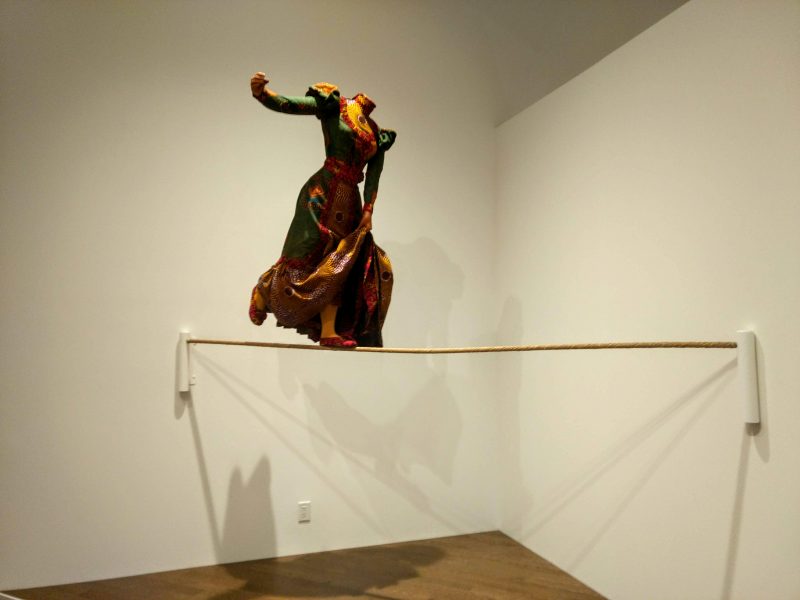
Around the walls are enlightening quotes by prolific authors like Chinua Achebe and Chimamanda Ngozi Adichie. The first piece inside of the space is at the right, “Lady Walking a Tightrope,” a mixed media sculpture by Yinka Shinobare, a Nigerian artist based in London. This headless figure clothed in a Dutch wax cloth gown graces a tightrope, seemingly winning against the laws of gravity. Although the figure’s gender is concealed, the title of “lady” can suggest anyone, the hands are the tanned pink of most fashion store mannequins. The gown has period European elements– the high neck collar, bodice, and flowing length– yet the bright colors and mixed patterns are distinctively African in origin. The raised fist and the indication that the figure blindly moves forward across this thick corded rope transcends the piece to a metaphorical sense of overcoming odds.
My favorite is “Man with Bicycle,” dated from the mid 20th century, a polychromed wood sculpture by an unknown Yoruba artist in Nigeria. I find the clunky shape of this red-faced figure dressed in primary blue attire and leading a yellow bicycle attractive due to its surprising color choices and its significant portrayal of modern transportation introduced to the area. It is a perfect example of the ancient ways of mark-making in wood, the geometric characteristics in the carving are repeated curves and rectangles. While the standing figure is an obvious abstraction, the bicycle is rendered as close to resembling one as possible. Yet each piece is attended to with great care and detail.
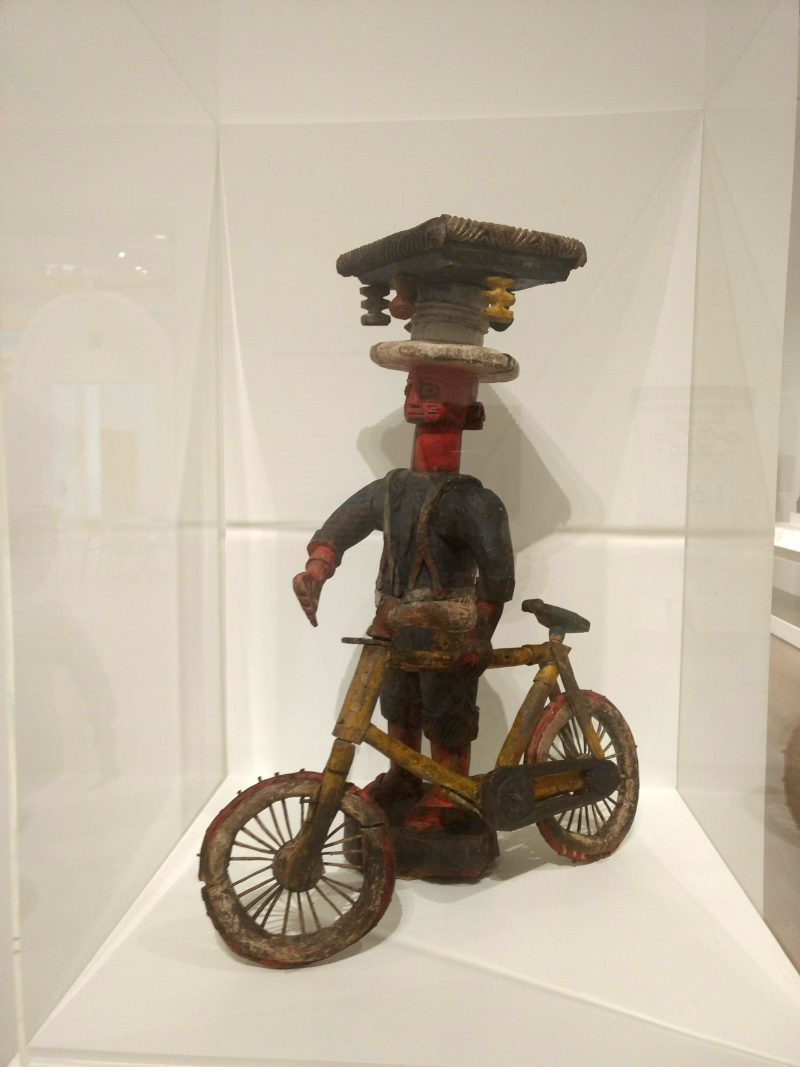
In the rear section of new explorative mediums, “Movement #36” by Ghanaian artist Kwesi Owusu-Ankomah is a heavy investigation in Adinkra—symbols representing proverbs and concepts, involving repetitive circles, squares, Afro picks. The language of the artist’s ancestry takes over the large red, white, and black composition in a symmetrical grid arrangement, the broad-lined text existing simultaneously and intertwined with floating human bodies. The profiled angle of an agile, bald-headed nude towers over the other serene head, the body long and outstretched, the fluid shapes of Adinkra tattooing on this seamless transparency. Other body parts are apparent, but there is no clear indication of ownership.
“untitled” by Simone Leigh— a Chicago based artist born to Jamaican parents—is composed of salt-and-wood, kiln-fired ceramics and metal wire. Giant, black cowrie shells, typically white and tiny, are clumped together like huge, magnificent grapes dangling from the ceiling above your head. Beneath the weighted structure poses a potential vulnerability to the viewer, a risk of peril. In this thought-provoking work that operates on duality, perhaps Leigh is reimagining the lost voices of those enslaved, those whose lives were bartered by the exchange of cowrie shells. The artist makes her “shells” impossible to withhold, fragile, and above reach.
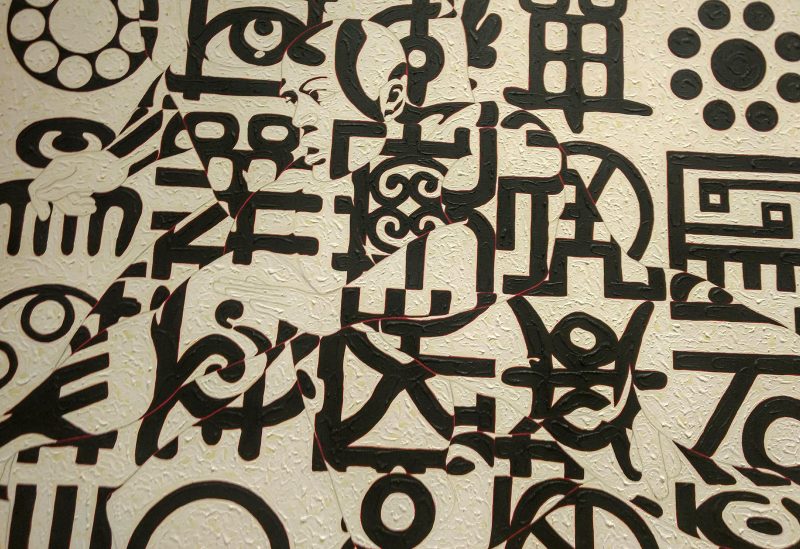
Owusu-Ankomah. From Art of Global Africa at the Newark Museum. Courtesy Janyce Denise Glasper.
Art of Global Africa celebrates the multifaceted range of the African Diaspora, showcasing how past and present artists have embraced modern technology and transformed that knowledge into various art forms that challenge worldwide perceptions. In between the intricately crafted masks, sculptures, and clothing by anonymous creators, Samuel Fosso of Cameroon, Lalla Essaydi of Morocco, Theo Eshetu of London, and other artists have been emerging beyond the Western stigma of “primitive naivety” for quite some time.
Arts of Global Africa, on view at the Newark Museum, 49 Washington Street,Newark, NJ



